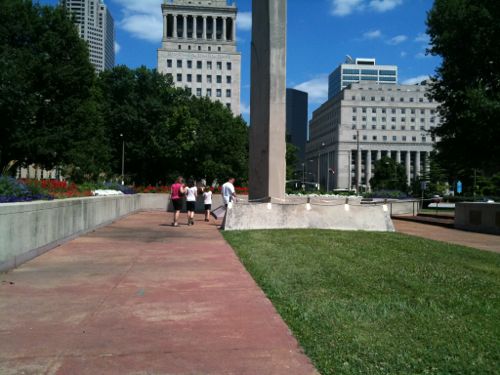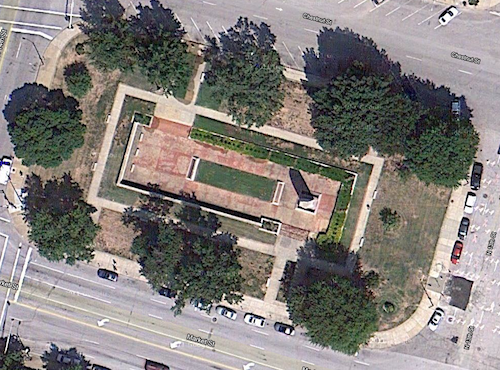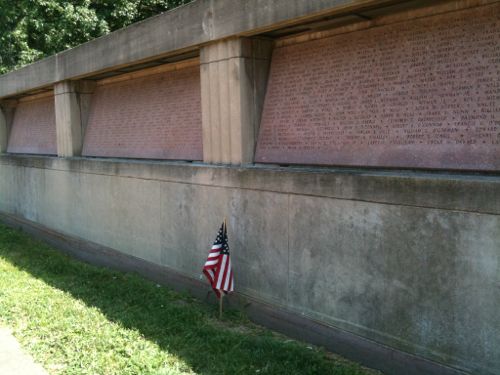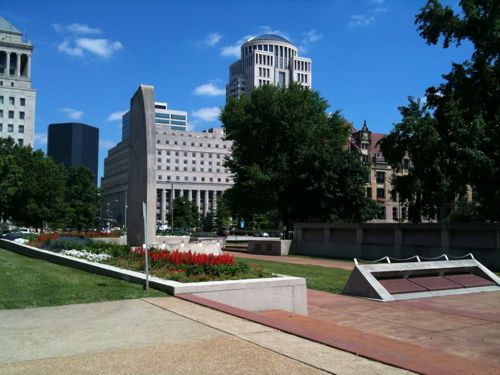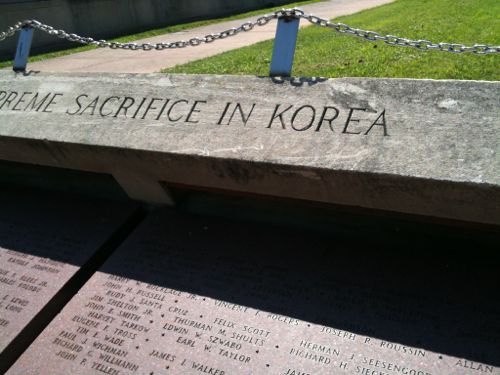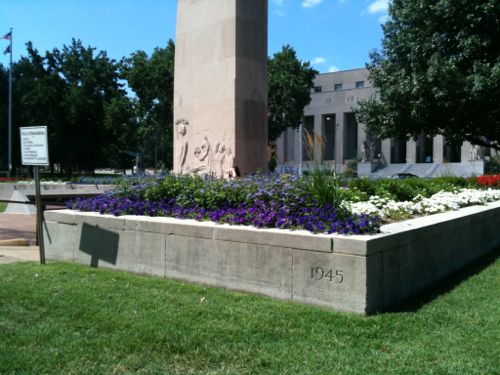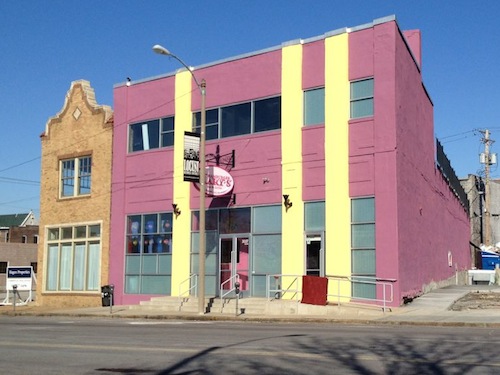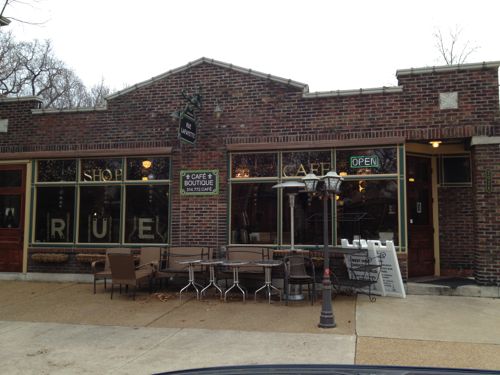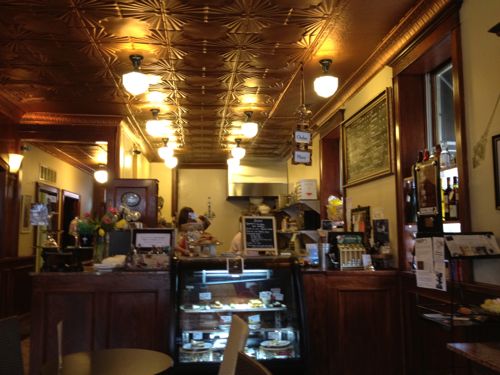St. Louis’ Court of Honor, Part 2 — Proposed New Memorial
|
|
Yesterday’s post gave you the background on the Court of Honor, opened in 1948 to honor those who died in WWII (read post), later updated to honor those who died in Korea & Vietnam.  Today’s post is about a proposed memorial for all those from the entire state killed in our last three wars: Desert Storm/Desert Shield, Operation Iraqi Freedom, & Operation Enduring Freedom (still ongoing). To date that count is 149 (see list) with roughly 20-30 from the St. Louis area. I posted about this memorial effort from the Missouri Military Memorial Foundation last May.
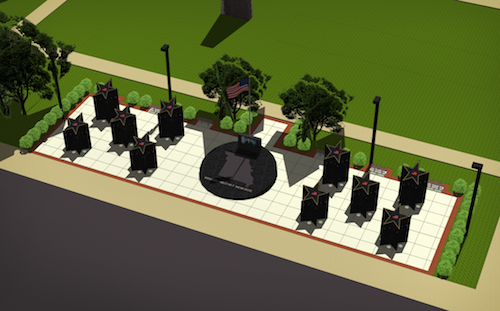
When I first saw the PDF with images in November it looked like the design was created for a generic site, not the Court of Honor block. Last week they presented the design to us along with updated images in the context. From the presentation to the Gateway Mall Advisory Board on January 18, 2012:
“The overall design will feature eight to ten granite star monuments strategically placed around a centerpiece. The Centerpiece will be measure approximately 20 feet in diameter and will house a digital display and speakers that will show videos of the personal stories of the heroes memorialized here, as well as informative videos about the military conflicts these servicemen and women served during. The Centerpiece has an outline of the State of Missouri on the surface and the conflicts represented by the Memorial.
The Star Monuments are solid concrete cores with 2″ granite veneers and will feature plaques of the fallen heroes which will include a black and white photograph of the serviceman or woman, along with information of what city they were from, their branch of service they were in at the time of their sacrifice as well as other information on them. The tops of the Star Monuments  are outlined in gold, again referencing back to the symbolism of the Gold Star family.
Each Star Monument will be able to display up to 28 plaques in total. They will be 6’0″ in height in the front and 9’6″ on the back. All plaques will be placed at or below average eye level so children and those in wheelchairs can easily read them. The paths between the monuments are also in adherence to ADA requirements for wheel chairs [sic] to negotiate around.”
You can read the full presentation handout here (3-page PDF). Initially we focused on the fact the roughly 30′ x 100′ plaza would abut the sidewalk and adjacent parked cars on Chestnut and suggested a landscape buffer. But as we continued discussing the proposal some commented on the darkness of the black granite, the towering size of the star monuments and the formal design in contrast to the adjacent Court of Honor.
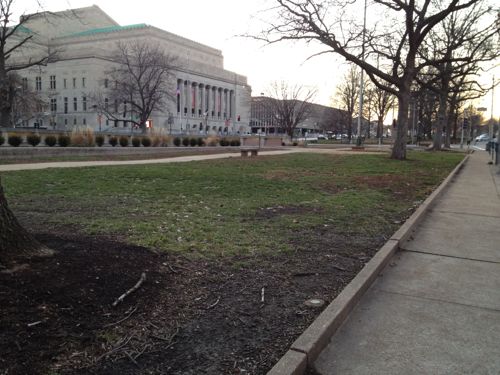
I can’t speak for my fellow members of the Gateway Mall Advisory Board but I stated during our meeting that I didn’t think this proposal was in keeping with the Gateway Mall Master Plan. Interestingly the plan mentions the blocks to the north, east & west of Soldiers’ Memorial but not the block to the south containing the Court of Honor. Unfortunately Parks Director Gary Bess approved the location in 2010.
What changes are compatible with the master plan then if nothing is mentioned? In my view adding memorials within the court of honor for additional wars, as was done for the Korean & Vietnam Wars, is very appropriate. The Court of Honor lists 2,753 soldiers from WWII, 214 from the Korean War and 161 from the Vietnam War — 3,128 in total. These are from St. Louis City & County.
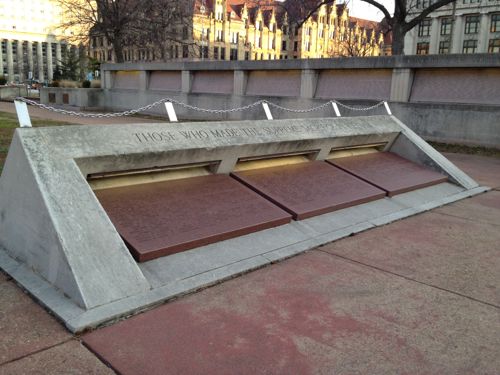
The master plan assumes the wide “hallway” will be built along the south edge of the block to tie all the blocks of the Gateway Mall together. A 30′ x 100′ plaza with a video screen a large circle and 8-10 stars taller than me on the green space on the north side of the Court of Honor? Â I do feel for the loss they’ve experienced but what goes into this block must be signed to compliment, not compete with, the Court of Honor.
The estimated cost is $1.3 million. Â I like to see private funds raised and invested in St. Louis’ public parks but not at the expense of the integrity of the space. I don’t think we should build horizontal plaza spaces in the lawn areas on any of the four sides of the Court of Honor. Doing so will detract from the Court of Honor in the center of the block.
I do think we must add something within the Court of Honor to acknowledge the sacrifice made by the men & women who fought in these three wars. If the names are listed as in previous wars there is room for all 149 from the entire state. One thing that caught my imagination is the video screen and the ability of that to communicate so much more information. My thought is this: add the names inside the Court of Honor, build the hallway on this that will connect to the hallway on other blocks eventually tying the entire Gateway Mall together.
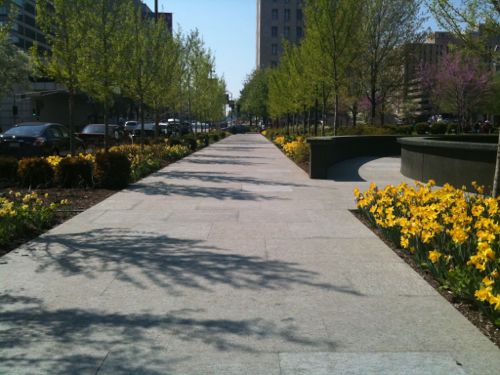
Right now we have only two blocks of the hallway, along the south edge of Citygarden. This element will make the primary access point to the Court of Honor block on the south side, not the north.
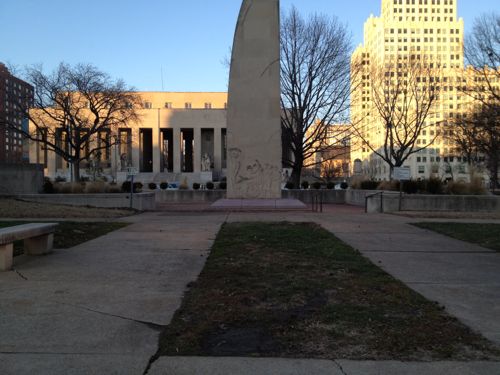
I can imagine an element in the center of the sidewalk, or to one side, that would identify this as the Court of Honor and include an interactive video screen. On screen touch controls would allow someone to find the information on their loved one or watch videos about those honored. Â The software could include features for WWII, Korea & Vietnam — such as some of the videos created by Nine Network (KETC).
That’s my thoughts on how to both honor those who gave their lives while also honoring the space and the thousands already honored here. My heart goes out to those trying to memorialize those 149 servicemen & women but I must also think about the 3,128 already memorialized here. The Gateway Mall Advisory Board will meet again via conference call to finalize our recommendations.
– Steve Patterson
